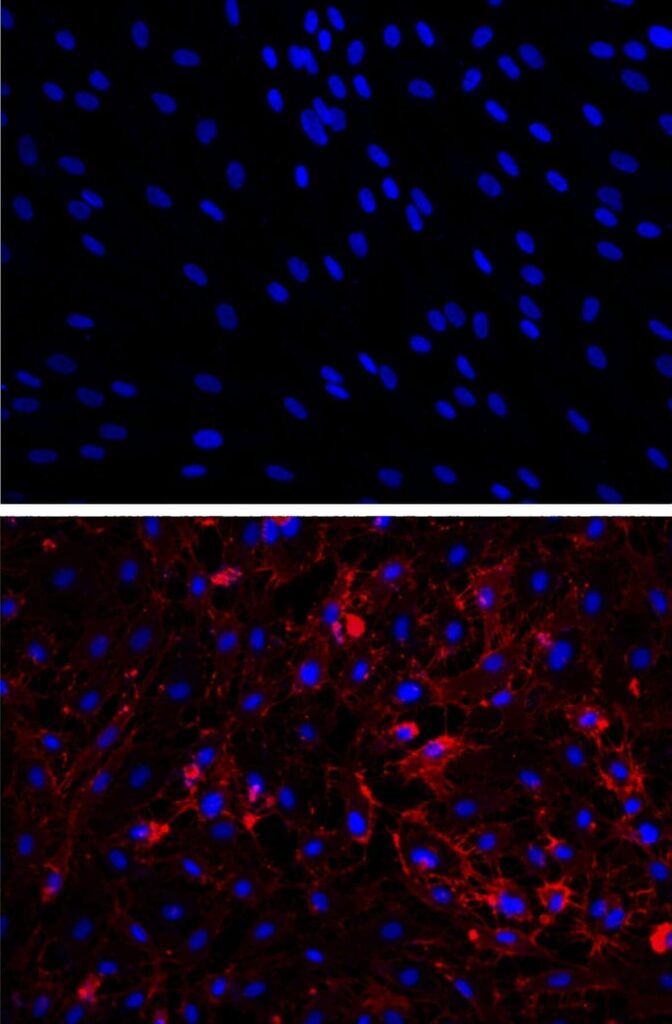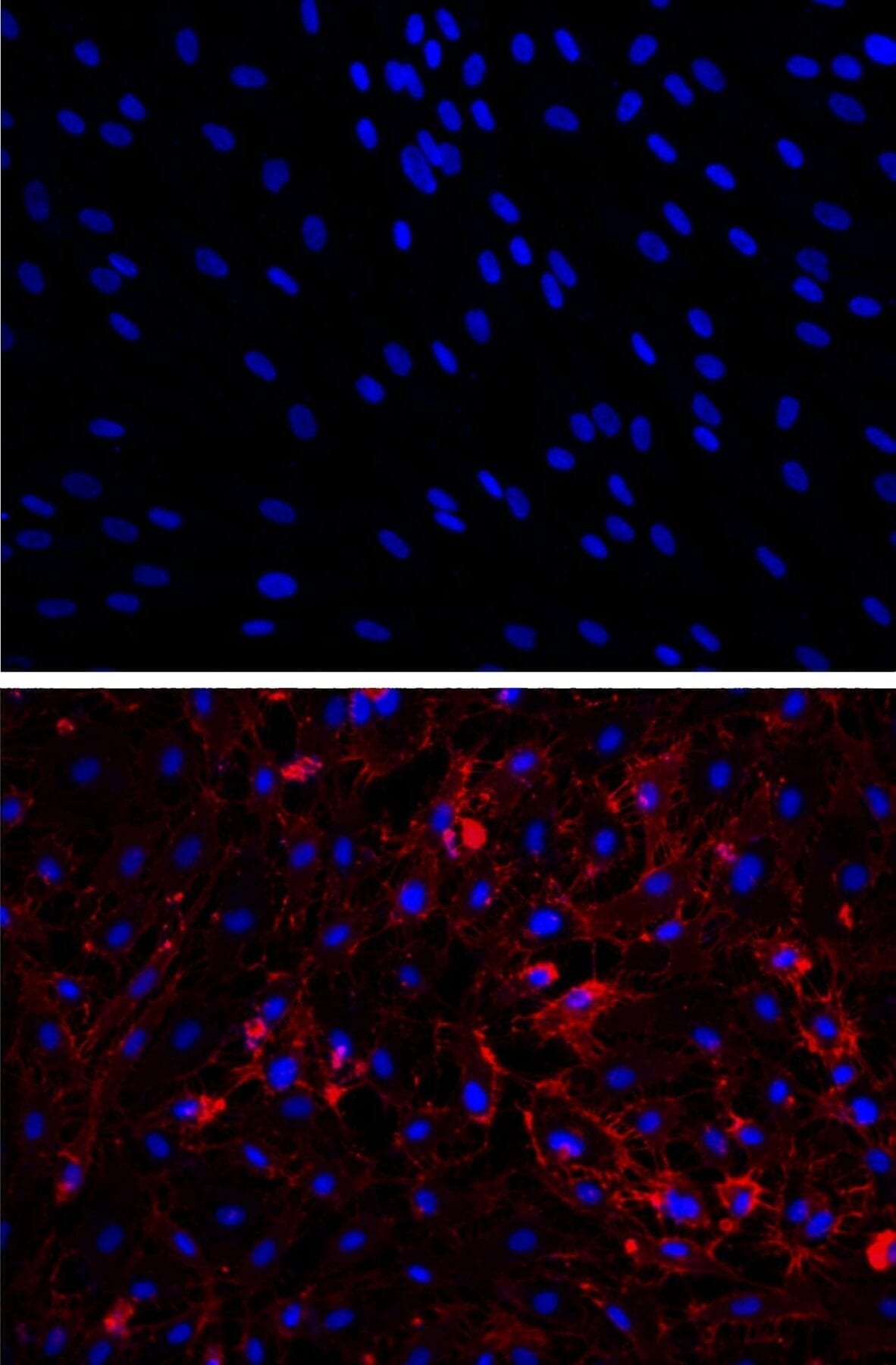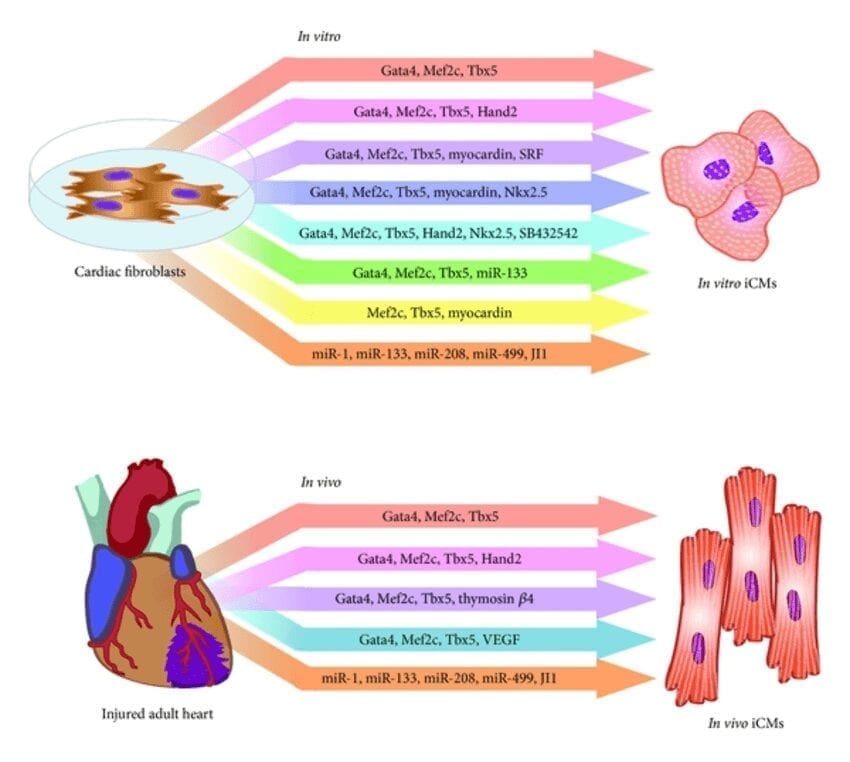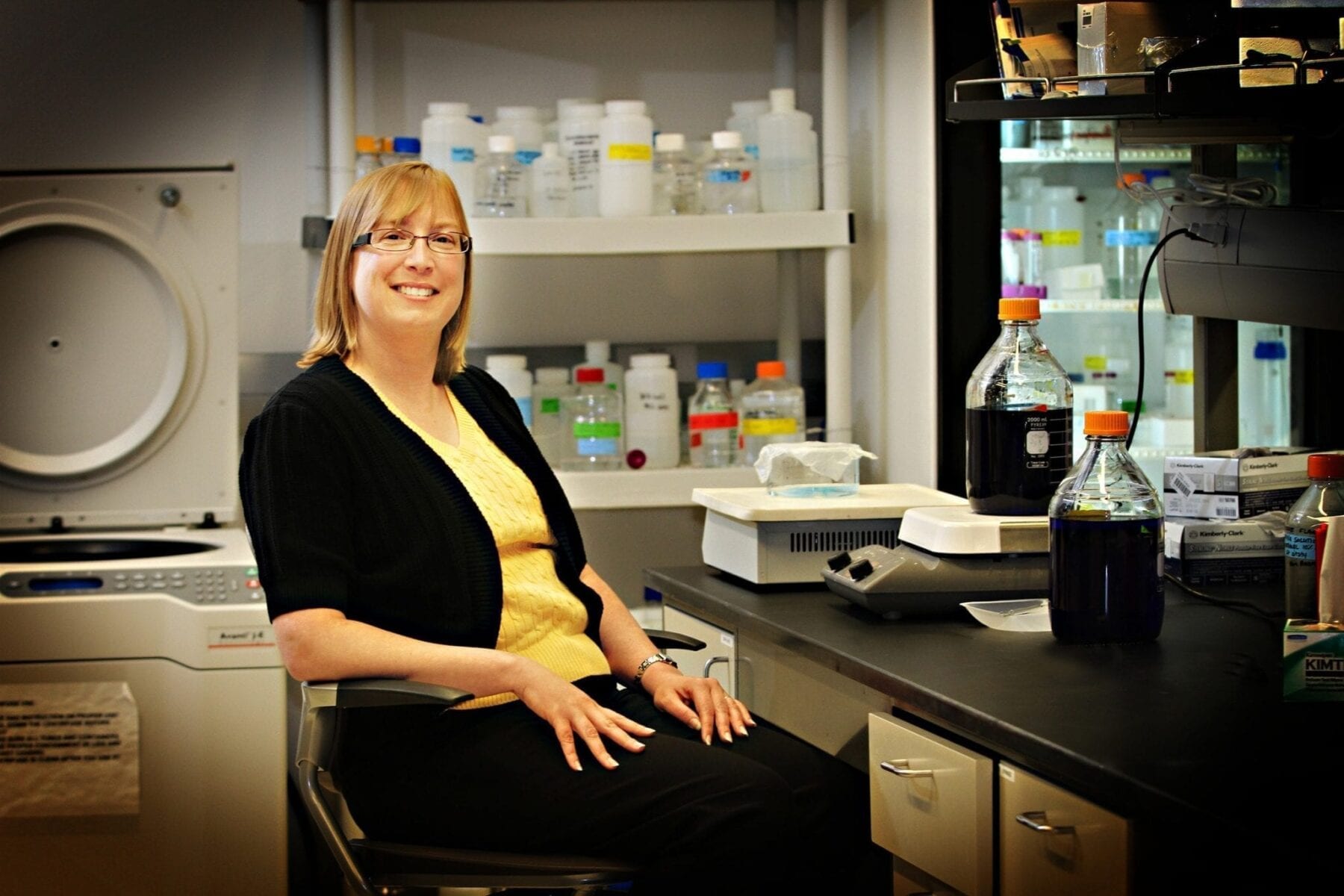
By transforming human scar cells into blood vessel cells, scientists at Houston Methodist may have discovered a new way to repair damaged tissue.
The method, described in an upcoming issue of Circulation (early online), appeared to improve blood flow, oxygenation, and nutrition to areas in need.
Cardiovascular scientists at Houston Methodist, with colleagues at Stanford University and Cincinnati Children’s Hospital, learned that fibroblasts — cells that causes scarring and are plentiful throughout the human body — can be coaxed into becoming endothelium, an entirely different type of adult cell that forms the lining of blood vessels.
“To our knowledge, this is the first time that trans-differentiation to a therapeutic cell type has been accomplished with a small molecules and proteins,” said Houston Methodist Research Institute Department of Cardiovascular Sciences Chair John Cooke, M.D., Ph.D., the study’s principal investigator. “In this particular case, we’ve found a way to turn fibroblasts into ‘shapeshifters’ nearly on command.”
Cooke said the regenerative medicine approach provides proof-of-concept for a small molecule therapy that could one day be used to improve the healing of cardiovascular damage or other injuries.
Other research groups have managed to generate endothelial cells cells using infectious virus particles specially engineered to deliver gene-manipulating DNA to cells. The DNA encodes proteins called transcription factors to alter gene expression patterns in such a way that cells behave more like endothelial cells.
“There are problems with using viruses to transfer genes into cells,” Cooke said. “This gene therapy approach is more complicated, and using viral vectors means the possibility of causing damage to the patient’s chromosomes. We believe a small-molecule approach to transforming the cells will be far more feasible and safer for clinical therapies.”
The Latest on: Reprogrammed cells
[google_news title=”” keyword=”Reprogrammed cells” num_posts=”10″ blurb_length=”0″ show_thumb=”left”]
via Google News
The Latest on: Reprogrammed cells
- Japanese researchers test cardiac spheroids for heart regeneration in monkeyson April 26, 2024 at 9:33 pm
Regenerative heart therapies involve transplanting cardiac muscle cells into damaged areas of the heart to recover lost function.
- Accessible Cell Therapies for Alzheimer's and Parkinson's Diseaseon April 25, 2024 at 10:21 pm
Researchers have now potentially advanced the accessible personalized cell-based therapies for Alzheimer's and Parkinson's diseases.
- UNC researchers create artificial cells that act like living cellson April 24, 2024 at 1:55 pm
The scientific breakthrough could impact regenerative medicine, drug delivery systems and diagnostic tools one day.
- New device improves stem cell generation and chance for accessible Alzheimer's cell therapyon April 24, 2024 at 12:11 pm
Researchers in Sweden say they have improved on a technique for converting regular skin cells into neural stem cells—an advance that they say helps close the gap for accessible personalized cell-based ...
- A genetic patch corrects a rare syndrome in human brain organoid grafted into a raton April 24, 2024 at 9:51 am
The team led by Sergiu Pasca, from Stanford University, wants to test this promising strategy in children with Timothy Syndrome, which is associated with autism and epilepsy ...
- Researchers create first artificial, modifiable cells with programmable DNAon April 24, 2024 at 8:08 am
The achievement holds significant promise for advancements in regenerative medicine, drug delivery methods, and diagnostic technologies.
- Scientists create artificial cells with capabilities for biomedical advancementson April 24, 2024 at 2:39 am
Researchers at the University of North Carolina , have successfully created artificial cells capable of mimicking natural cellular behaviour ...
- Researchers Create Artificial Cells That Closely Resemble Living Cellson April 23, 2024 at 5:00 pm
“We reprogrammed sequences of DNA so that it acts as an architectural ... The ability to program DNA in this way means scientists can create cells to serve specific functions and even fine-tune a cell ...
- Self-assembling synthetic cells act like living cells with extra abilitieson April 23, 2024 at 5:00 pm
Blurring the line between artificial and living materials, these cells can be reprogrammed to perform multiple functions, opening the door to new synthetic biology tech that goes beyond nature’s ...
- Researchers create artificial cells that act like living cellson April 23, 2024 at 12:19 pm
Researchers describe the steps they took to manipulate DNA and proteins -- essential building blocks of life -- to create cells that look and act like cells from the body. This accomplishment, a first ...
via Bing News











